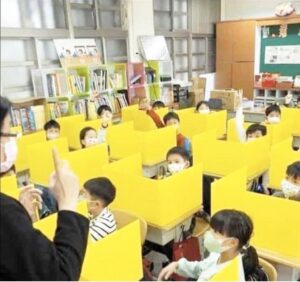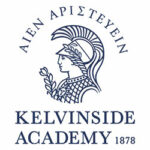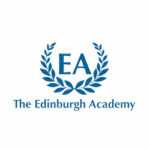With talk starting to turn to schools re-opening, many people have started to question how this is going to be implemented, but safely. For example, “classrooms may have to be redesigned to allow social distancing, so maybe not all children can go back to, and be at, school at the same time” Scotland’s First Minister, Nicola Sturgeon suggested on Thursday.
Whether there will be an impact on the learning environment, what that might be and how permanent the solution will need to be, have naturally been questions we’ve been asking ourselves too. Over the last few weeks there have been grand claims from all sectors of the education world – from those suggesting that ‘EdTech’ has saved the day and will inevitably become the backbone of a new normality through to those who believe that the genie is out of the bottle when looking at how we organise teaching and learning and that’ll it’ll never be the same again. On balance, this is what we think:
EdTech
It’s a word/phrase we have a bit of an issue with anyway. Whilst our area of expertise is clearly furniture – or FFE in edu-lingo – we prefer, simply, to start, talking about ‘learning’. Lots of different elements come together in the creation of successful, engaging opportunities for learning and we’re uncomfortable limiting ourselves in such a granular way as starting off just talking about any one of those ingredients – including our own.
Of course ICT has formed a significant part of the emergency response to schools closing – with just 48 hours notice here in the UK. But from what we can see, whilst not always, it’s been largely confined to being a delivery mechanism: of content; of worksheets; of visual/aural contact between the school community. Of course there are exceptions – but these have been largely by schools who were using technology well in the first place. Many instead have struggled, doing no more than uploading a pdf to the VLE, asking the child to print it out, do it, photograph it and upload it back for marking. Whilst one positive that has come out of the current emergency is that it has forced some previously reluctant teachers to engage more with ICT, we don’t see it as the panacea the industry behind it would perhaps like us to see it as. Remember we’ve been there before with interactive whiteboards.
Physical environments
Certainly here in the UK, the vast majority of the school estate is comprised of individual rooms – 4 walls and a door – around 56 square metres in size. In each of these, most will see 15 tables and 30 chairs. To achieve a planned density leaving 2 metres between occupants means you can accommodate just 12 students – or 40% of a typical class size. So you don’t need more furniture – you need less*.
One teacher to 12 students would also mean you’ll need two-and-a-half times as many teachers if you simply go back to fully timetabled, supervised teaching as we largely had before – or alternatively you’ll only be able to have supervised teaching for less than half of the time and you’d need to decide what happens for the other 60%. Are students at home, in which case what happens to working single-parent families, or those where both carers have to work? If not, where?
There’s been a photograph going around Twitter purportedly of a school in China, with little yellow screens around each table. If, however,  as computer modelling has demonstrated, a cough can transmit particles over entire 8-foot-high supermarket shelves, a flimsy foot-high plastic screen isn’t going to do much except, perhaps, give you a false sense of security.
as computer modelling has demonstrated, a cough can transmit particles over entire 8-foot-high supermarket shelves, a flimsy foot-high plastic screen isn’t going to do much except, perhaps, give you a false sense of security.
An alternative is to look at the school estate holistically. Where are under-utilised spaces? What happens in corridors during lessons? What about dining halls, the outdoors, and libraries? If these spaces can be used to accommodate students, we may be able to accommodate all of the students, at school and at the same time. Teachers would inevitably have to substitute control, for trust (we know easier said than done) but if there’s one thing that’s become clear over the last few weeks it is that one of the most important things we have to change is habit/behaviours.
Interestingly, and some might perhaps see as divine retribution, those schools where there are larger, interconnected spaces – schools such as West Thornton Primary Academy (at least as it was in Di Pumphrey’s day), Atlantic Academy – certainly when it was IPACA, Plymouth School for the Creative Arts, XP and XP East in Doncaster as well as Wapping High School in London, may find this rather easier than those just with long corridors with serried banks of enclosed classrooms coming off them as seem to be favoured by the likes of Nick Gibb.
Professor Stephen Heppell, with whom, together with his teacher-daughter Juliette, we collaborated in the design of the Learniture collection, offers some great advice here for teachers looking at how to use spaces within the school more effectively.
Loos, PPE and hygiene
As anyone who’s worked in a school will know, social distancing, especially for the very young, is going to be particularly difficult if not nigh-on impossible. Stephen recommends making a 4-metre diameter hoop from garden hose (you’ll need a shade over 12.5 metres to do this) to give students a visual cue as to how big this ‘safe’ space is.
Perhaps going out on a bit of a limb here, but we suspect that, at least for the next year or so, that new social norms will evolve with regard to clothing too. For example, everyone at Learniture, as well as those working for our parent company, Spaceoasis, have been issued with antiviral ‘snoods’ – protecting mouth, nose and ears from, according to the manufacturers, 96% of viruses. If we know that it’s unrealistic to expect social distancing to be always observed and always perfect (our own experience, for example, in supermarkets demonstrates this as people, who have queued frequently at 5 metre intervals before being admitted into the store, still feel happy to lean past you to get something they want off a shelf) then we need to think what we’re going to do to mitigate these lapses. So we think that some form of PPE together with hand washing or sanitising, will inevitably form part of any return to school. And for that we’ll need, potentially, to think about toilet design too – avoiding the ‘pinch points’ that are created in so many school loos, as well as removing the unnecessary (and usually pull-to-exit) doors on them too.
Bringing this all together
When we work on design projects for our parent company, Spaceoasis, we always start with the mantra “form follows function” and this is no different here – only the ‘function’ has had a new element thrust into it, and at breakneck speed too; without time to plan or prepare. So now we have to consider how we can achieve optimal learning environments whilst not simultaneously creating the perfect place for the transmission of Coronavirus that most existing, traditional, classrooms represent.
Perhaps for too long, the overarching ‘function’ of a school has been to impart content as efficiently as possible and this, together with simple economics (state schools simply cannot afford to have more than one teacher per 30 students) has led to the design of schools not changing much since Victorian times.
To think we’re going to redesign or rebuild schools overnight though is niaive in the extreme. So the question is “how are we going to make use of the existing school estate yet accommodate this new, additional requirement?”
We’ve already proved that we can think outside of the box: who’d have imagined there would be entire year cohorts who do not sit formal examinations but are instead simply assessed by their teachers?
Compromise will inevitably form part of the solution. In the majority of schools it’ll involve teachers and learners as well as politicians alike changing how they consider learning and changing or adapting long-held habits and practices. There won’t be a single magic bullet – how this is achieved will be different in pretty well every setting, taking into account the unique mix of a particular school’s community of learners, the skill sets of the teachers and the architectural estate of the school. But fortune favours the brave – and there’s a bright new future out there to be fought for.
* It is interesting to note that the World Health Organisation recommend a distance of just 1 metre





















